Stackability
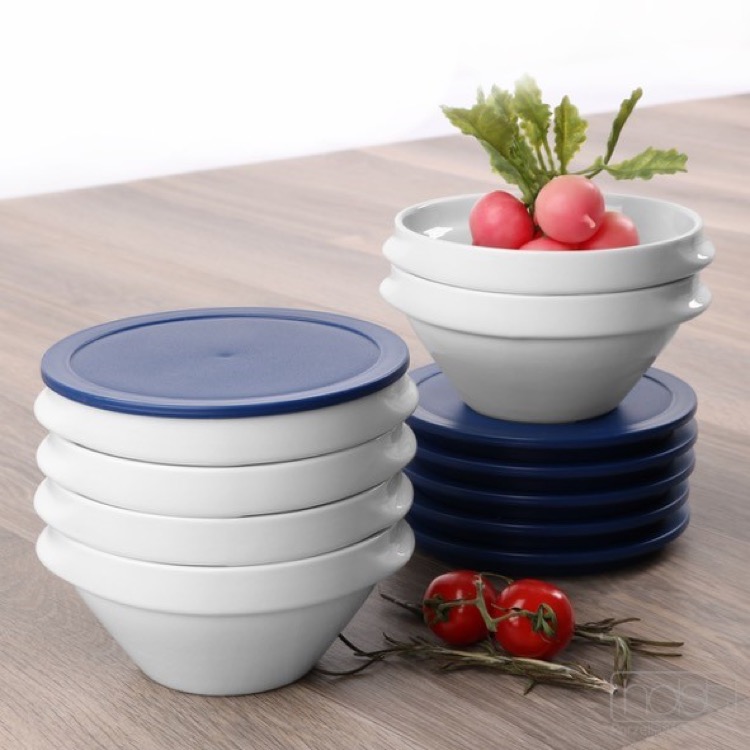
Stackability of porcelain and tableware
The stackability of porcelain and tableware plays an important role, especially in commercial use, in the hotel, catering and communal catering industries. Like many other properties of porcelain, the term "stackability" is neither standardized nor exactly defined. Above all, however, different customer groups of mass caterers use the term "stackability" in very different ways. For a hospital or clinic, "stackability" expresses an indispensable functional feature, which is relatively insignificant for a café, bar or restaurant.
So if you as a customer have special requirements for stackability, you should define them precisely to the salesperson. This is the only way to reconcile different views and definitions of stackability and stackability and ultimately lead to a satisfactory result.
Accurate stackability is an expensive commodity

In our material science "Laws & Specifications" the DIN standard 66072 is described, which specifies a limitation of the shrinkage tolerances caused by production. For a porcelain factory, shrinkage tolerances are usually only secondary quality criteria, because deviations do not in any way affect the functionality of a plate or cup. Therefore, special quality criteria are established for functional tableware and system porcelain, which cause additional rejects of B-goods. Occasionally it is quite difficult to make it clear to a member of the quality department that a plate with 25.6 cm is still "good" and with 25.7 cm "unusual". Therefore the basic principle applies: the higher the requirements for stackability, the more the price increases.
Stackability for canteens with automatic rinsing and stacking systems
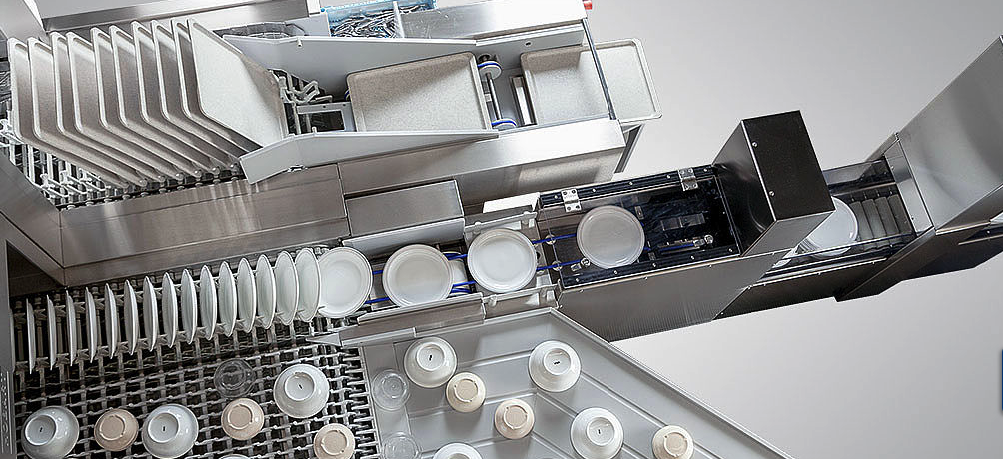
(Copyright: Hobart GmbH, Offenburg)
Hospitals, clinics and canteens, as well as all-in-club facilities and other large companies often work with large washing lines and automatic stacking and clearing systems. With many of these systems, item weight, dimensions and stacking accuracy must be very precise. It is recommended to use the classification "learned stackable" for such catering systems.
Stackability at mise en place
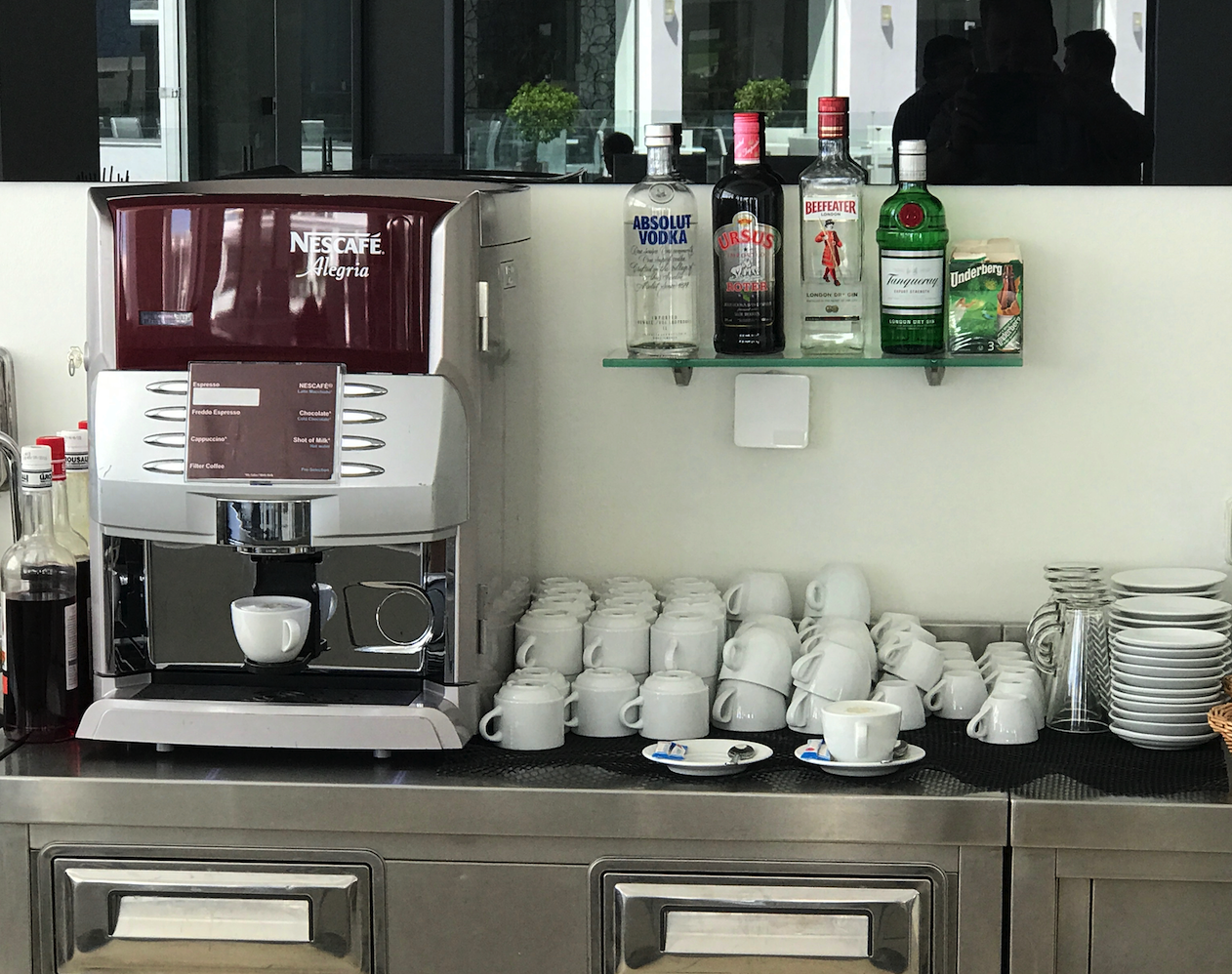
With a "mise en place" (mis en place) the gastronomer describes the provision of the objects and utensils necessary for a smooth process within a department, in the kitchen also ingredients, spices and kitchen tools. The requirements in terms of "stackability" of serving utensils in restaurants, cafés and service stations also vary greatly. In many cases a simple stacking (see picture above) is sufficient, which already meets the low requirements of stackability.
Stackability in banquet
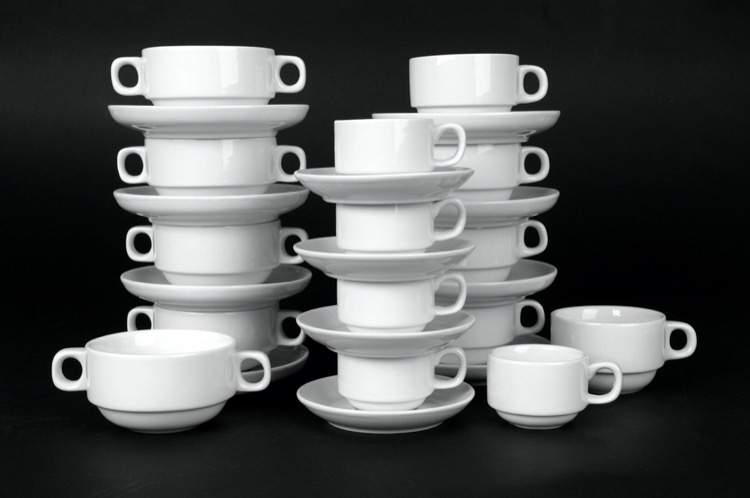
Banquet tableware and buffet porcelain have completely different requirements and criteria for stackability. It is not the stackability of one cup into another that is important, but the compatibility of cup and saucer. A saucer must offer a secure hold on a top cup, so that so-called cup towers can be prepared.
Stacking aesthetics - a completely overrated criterion
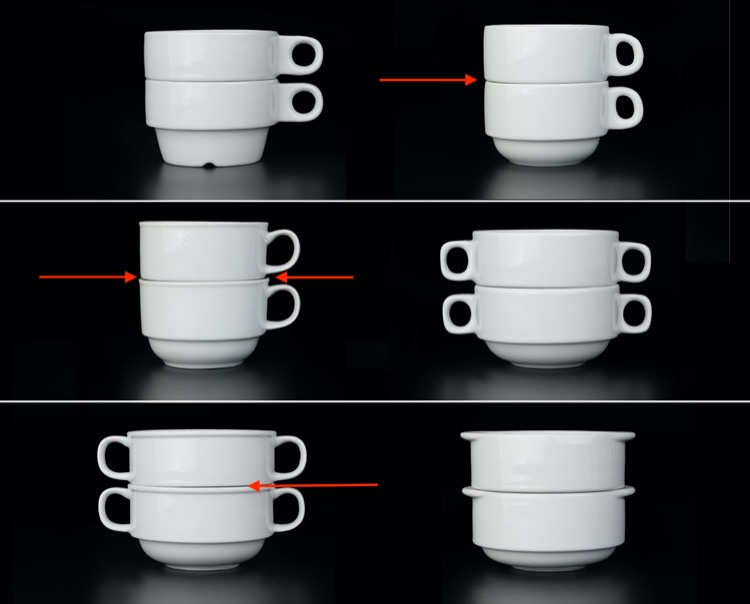
If you believe the toothpaste advertising, all teeth are white. People who use creams always have beautiful skin and the fruits in the supermarkets are always fresh and accurately sorted. There are only straight carrots, round apples and well-formed potatoes. It is the same with porcelain. If you look in the advertising brochures of the manufacturers is always a stack of porcelain as if drawn with a ruler. Only that the porcelain factories do not give away their crooked cucumbers to the tables and the needy.
We at Holst Porzellan do not select our photo samples! We show the goods and the stackability as they will arrive at the customer in the end. Sometimes better and sometimes actually worse. Porcelain is in many cases a handmade product and is only brought into shape when fired at more than 1,320 °C. It is wrong to make an optical comparison with plastics and injection molded products!
Porcelain is never 100% stacking accurate!
We at Holst Porzellan have divided the stackability of our goods into three major groups,
- not stackable
- stackable
- calipered stackable
whereby an explanation for the latter is not required!
Calipered stackability of Holst Porzellan
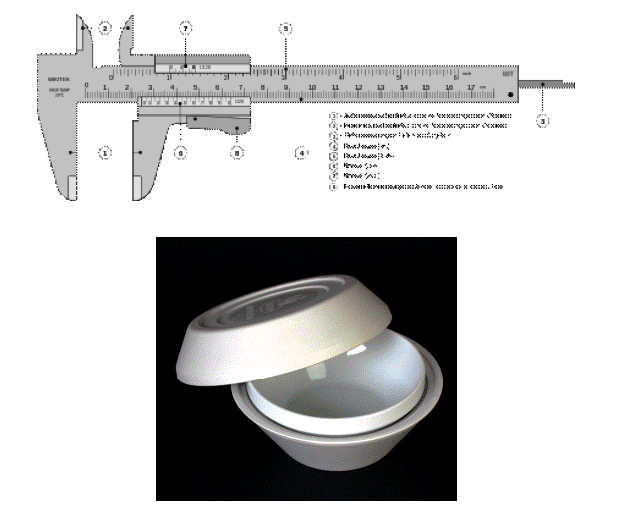
We have dedicated a separate page to "calipered ware" in our product information. In our quality management we have specified particularly strict, i.e. low tolerance deviations in order to guarantee the functionality, e.g. in food distribution systems. Slight deviations in the stacking aesthetics are nevertheless a natural characteristic of porcelain.
Stackable dish by Holst Porzellan
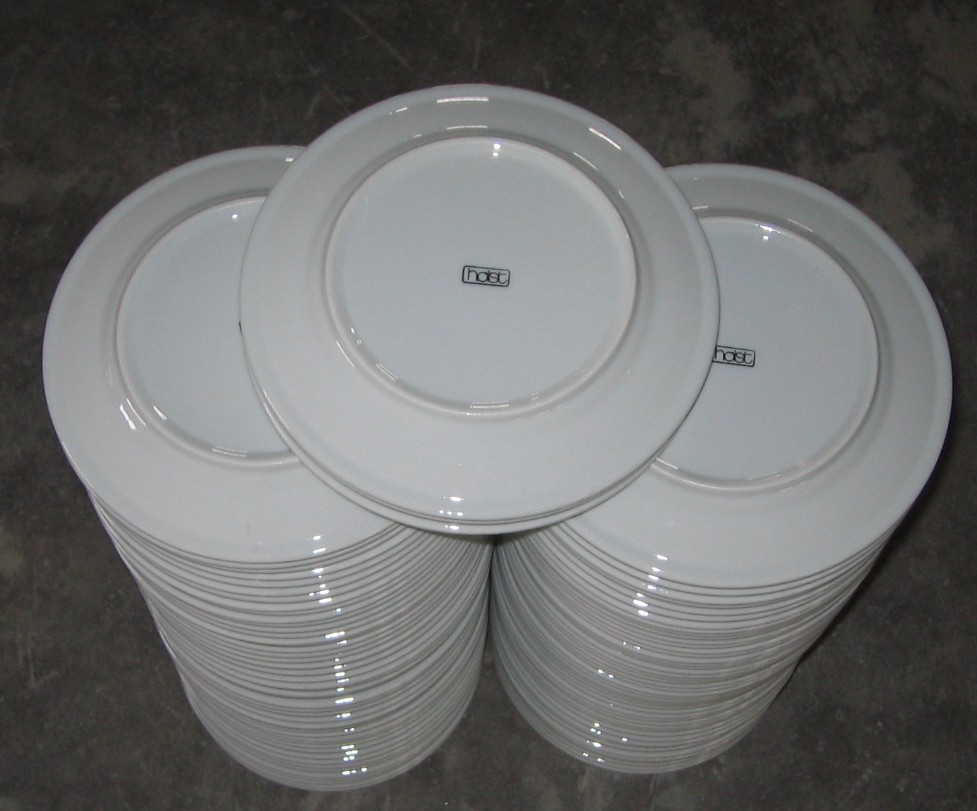
Stackable porcelain from Holst Porzellan is suitable for general use at the mise en place in the kitchen, buffet and restaurant, taking into account the intended purpose. A stacking aesthetic is usually only noticed by the dishwasher in the scullery and the guest would never notice a difference whether the coup plate (see picture) measures 256 or 258 mm in diameter.
We attribute different stacking capabilities to the usage properties, which are already determined by the appearance of the respective article. A stacking cup - with edge reinforcement and stacking edge - naturally documents a high stacking capability. A bulbous cappoccino cup for a coffee specialty does not automatically reflect "a certain form" of stackability by its appearance. Therefore we at Holst Porzellan check whether a "stackability on top of each other" is suitable for the usual purpose of the respective porcelain article; e.g. 4 cappuccino cups at the mise en place or on a coffee machine.
